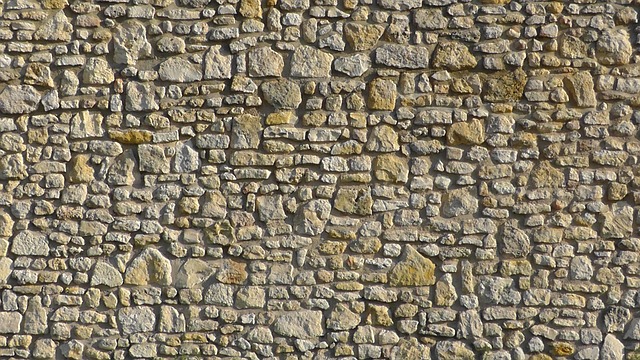Secant pile walls create strong, continuous barriers by interlocking concrete piles, ideal for deep excavations in challenging urban sites. Their design adapts to complex ground conditions while offering excellent water-tightness and lateral support. Understanding their construction and advantages helps planners choose efficient, reliable retaining solutions tailored to demanding projects with strict stability and load-bearing requirements.
Essential overview of secant pile walls for deep excavation and earth retention
The core of Secant Piled Walls, as detailed on the GeMech information page, lies in their composition: interlocking reinforced (structural) and unreinforced (non-structural) piles are overlapped to form a seamless barrier for effective water and soil retention. This continuous wall delivers robust earth retention, with primary reinforced piles providing structural load support and secondary piles ensuring the wall’s integrity across variable soil conditions.
Also read : Discover exceptional hairdressers near brixton for your style
Applications are versatile covering deep basement construction, excavation shoring, slope stabilization, and reliable groundwater cut-off. Due to their adaptability, these systems excel in urban or restrictive settings requiring minimal settlement and vibration, making them ideal where adjacent structures demand protection.
Benefits stand out in water-tightness, high vertical and lateral load capacity, and adaptivity to complicated layouts or underground obstructions. However, challenges include higher installation costs, demanding construction quality to avoid misalignment, and constraints versus methods like contiguous or diaphragm walls.
In the same genre : Transform your dental practice with expert accountant services
Core construction methods, materials, and technical design for secant piled walls
Pile types, reinforcement, and material options
Secant pile walls use overlapping primary and secondary piles to create a water-tight, load-bearing barrier. Primary piles can be unreinforced (commonly formed from cement-bentonite slurry or low-strength concrete for Hard/Soft or Hard/Firm compositions) and are alternated with secondary reinforced piles (cast using high-strength structural concrete and reinforced with steel cages or beams). For the most demanding applications, Hard/Hard combinations use both piles in full-strength reinforced concrete, offering high-integrity retaining structures adaptable to diverse ground conditions.
Installation sequence: guide wall, primary and secondary piles, interlocking
Installation starts with a guide wall, precisely aligning pile positions and ensuring verticality during drilling. Primary piles are drilled first, followed by secondary piles bored to cut into the edges of the already-set primary piles, ensuring continuous interlock and a robust water seal. This staged sequence, carefully managed at each step, is critical in achieving dimensional precision and minimizing soil disturbance.
Common techniques: CFA, cased CFA, rotary bored, and hybrids
Construction typically uses Continuous Flight Auger (CFA), cased CFA for additional support in loose or waterlogged soils, or rotary bored piling for stiffer conditions. Hybrid methods combine speed and accuracy, optimizing performance where ground conditions change. This flexibility delivers secure, durable retaining walls for urban development, deep basements, and excavation in demanding sites.
Performance, comparison, and planning considerations for project managers and engineers
Analysis of secant vs diaphragm and contiguous walls for site-specific suitability, performance, and cost-efficiency
To directly answer performance-based questions through the SQuAD approach: secant pile walls generally surpass contiguous and diaphragm walls in groundwater control and deformation management, while remaining cost-efficient for many urban excavations.
Secant piling vs diaphragm walls comparison: Secant walls create a nearly watertight barrier by overlapping piles—useful in high groundwater or irregular layouts. Diaphragm walls offer similar water resistance but often require more extensive machinery, sometimes increasing costs for restricted access sites. Compared to contiguous walls, secant walls are superior for flood-prone or soft soil conditions, as contiguous walls have gaps and limited water cut-off ability.
Structural performance: load-bearing, lateral support, deformation control, groundwater cut-off efficiency, and maintenance
Load-bearing capacity is robust due to full-length reinforcement, with high-strength concrete and steel improving vertical and lateral resistance. Advanced guide walls and precision drilling help maintain verticality, supporting heavy adjacent loads and reducing vibration. Secant retaining walls also deliver lateral support for deep excavations, controlling deformation and settlement beyond the wall.
Water cut-off performance stands out: secant walls block seepage with dense overlap, outperforming contiguous piling. Maintenance remains minimal with proper quality assurance, though routine checks are encouraged to confirm watertightness and structural integrity.
Key planning, quality assurance, monitoring, and innovations
Planning considerations include selecting pile diameter, overlap, reinforcement, and method suited to project constraints particularly in urban or confined areas. Rigorous quality assurance, guide walls, and advanced monitoring technology guarantee correctly aligned, vertical, and sealed structuring. Innovations such as cased secant piling and hybrid methods continue to push efficiency, precision, and adaptability, supporting increasingly complex site needs.











